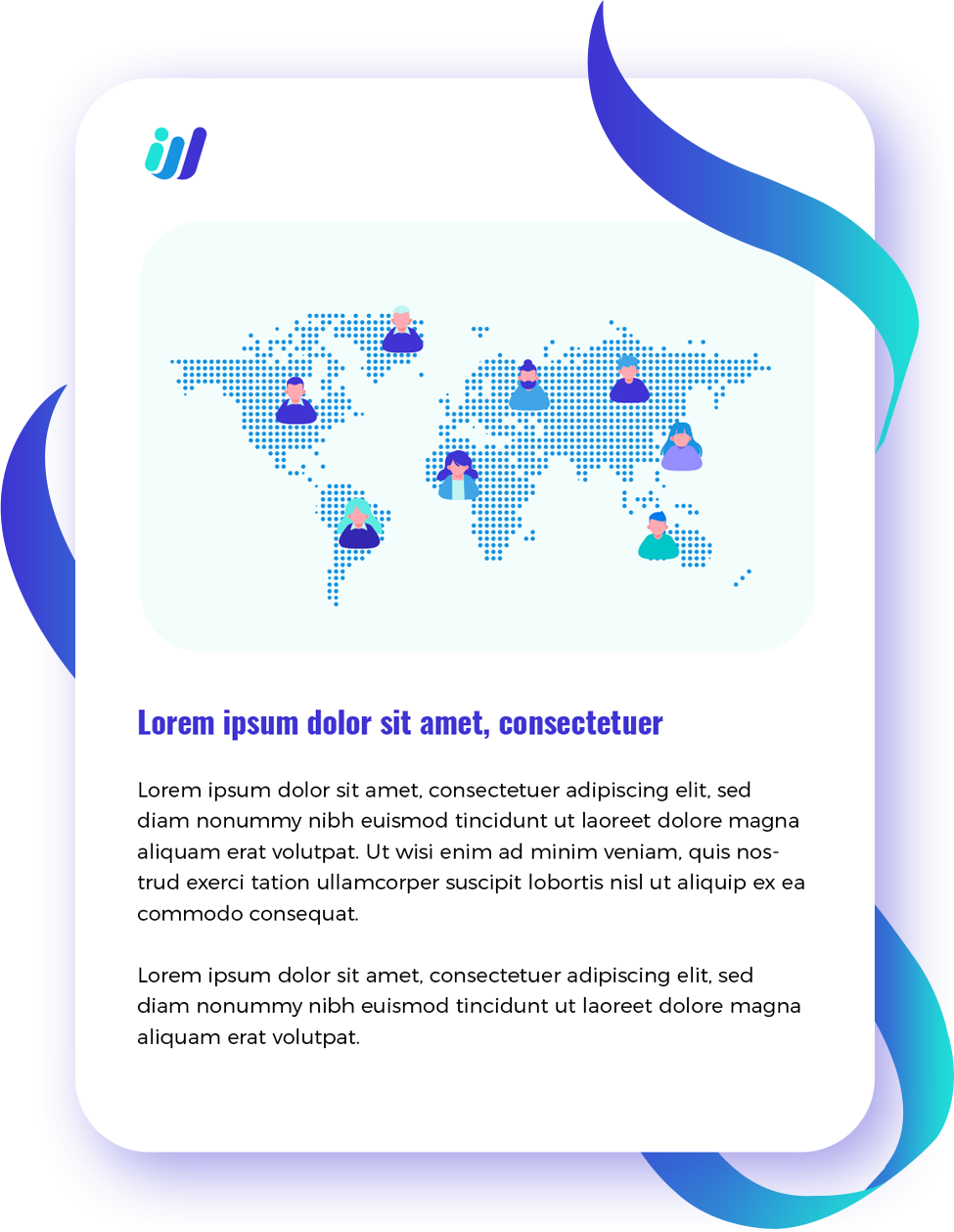Workplace demographics are changing rapidly right now. There are a variety of reasons for this, including Millennials entering the labor force, an aging workforce, and more women entering the workforce. Companies that offer workplace services and can adapt to changes in their clients’ cultural diversity landscape by improving diversity and inclusion have a significant competitive advantage.
The importance of diversity and inclusion in business cannot be overstated. Hiring the right people is the first step toward creating an environment that welcomes and celebrates diversity.
Companies that prioritize racial and ethnic diversity have a 35% higher chance of getting higher financial returns, according to a McKinsey study. A company’s financial performance was 15% better when it had a high gender diversity.
This article explores the role of outsourcing in fostering inclusion and diversity in the workplace. Next, we’ll discuss how to build a more diverse workforce, including how recruitment process outsourcing can help!
Importance of Diversity and Inclusion in the Workplace
A company’s diversity and inclusion policies and strategies ensure that employees from diverse backgrounds, orientations, and identities feel valued and appreciated at work. Everyone should have the opportunity to contribute meaningfully to a diverse and inclusive workplace.
One of the most well-known and enduring tech giants, Apple Inc., has successfully implemented diversity and inclusion into its work culture. Apple can continuously come up with new ideas and diverse perspectives by listening to their employees and app developers and involving them in decision-making and strategy development.
Research by Deloitte confirms these benefits, finding that companies that encourage diversity of thinking improve their innovation and creativity by 20%. As a result of diversity, decision-making is also improved, resulting in a 30% reduction in risk.
How Diversity and Inclusion Improve Workplaces
1. Wider Talent Pool
Outsourcing provides access to a wider pool of talent. Let’s take the IT industry as an example. Outsourcing certain IT functions can help businesses take advantage of the expertise and resources of their outsourcing partners, which may include a more diverse talent pool. By recruiting and retaining a more diverse workforce, businesses can benefit from a wider range of perspectives and ideas. A diverse and inclusive workforce can also be fostered by outsourcing partners that have established diversity and inclusion programs.
2. Removes Geographical Barriers
Outsourcing also reduces the impact of geographical barriers. Recruitment and retention of a diverse workforce are often hindered by geographical barriers, which can make it difficult to build a diverse and inclusive team. Businesses can benefit from the expertise and resources of their outsourcing partner, regardless of where they are located. By doing so, businesses can overcome geographical barriers and create a more diverse and inclusive workforce.
3. Increase Revenue
A company’s revenue and profitability are significantly influenced by workplace diversity, according to the American Sociological Association. A company with higher racial diversity generates 15 times more revenue than one with lower racial diversity.
A diverse team brings a wide range of life experiences and backgrounds to the table, which allows them to see things from a different perspective. You can come up with new approaches to problems or challenges with that new viewpoint. It is possible to outperform the competition in terms of innovation when these disparate perspectives are brought together.
By nurturing a culture that values outside-the-box thinking, diversity fosters innovation. Market penetration is 70% higher for companies that practice diversity.
4. Flexible & Supportive Environment
Businesses can also benefit from outsourcing by creating a more flexible and supportive work environment. There is often a struggle for businesses to accommodate the diverse needs and preferences of their employees, especially when it comes to work-life balance. Businesses can achieve a better work-life balance by outsourcing certain IT functions, which offers flexibility and support from their outsourcing partner. In addition, outsourcing partners can help businesses create a more flexible and supportive work environment and accommodate their employees’ diverse needs and preferences.
5. Boost Reputation
Lastly, outsourcing can help businesses improve their reputations and build stronger relationships with their customers. A diverse and inclusive workforce can improve a company’s reputation and build stronger relationships with its customers, particularly those of diverse backgrounds. Further, businesses can take advantage of the expertise and resources of their outsourcing partner, which can help them to better understand the diverse needs and preferences of their customers.
A Guide to Diverse and Inclusive Recruitment (and How Outsourcing Can Help!)
As we now understand the importance of diversity and inclusion in businesses, let’s talk about how we can create a more inclusive workplace, starting with recruiting.
1. Set Diversity and Inclusion Benchmarks
Identifying benchmarks is the first step in creating a more diverse and inclusive workplace. It is critical to create strategic action plans to help you improve based on these measurements.
An example benchmark might be to increase the number of minority hires within a specified time period. Within six months, you can increase the number of qualified female tech-related positions by [x percent]. It is also a good idea to add more visible racial minorities to your sales team. Increasing the percentage by [x percent] within a year would also be a realistic and actionable goal.
Working with outsourcing companies can make this process easier for some businesses. Using data analytics, many outsourcing providers assist organizations in identifying gaps in their D&I policies, setting realistic benchmarks, and hiring the right talent within the set timeline.
2. Encourage Referrals from Your Diverse Workforce
You can improve the diversity of your workforce by encouraging diverse employees to refer qualified candidates. By implementing employee referral programs to foster diversity and inclusion, you can reduce hiring time, eliminate extra screening tests, and show diverse workers you value their input and feedback.
Employees will feel valued and trusted since they are part of the company’s growth. Referred employees will feel more comfortable and engaged since they know at least one person in the organization.
3. Eliminate Bias from Job Descriptions, Interviews, and Assessments
Language and methods used in the hiring process can often be biased and unfair, hindering diversity and inclusion, whether consciously or unconsciously. The good news is that businesses can take steps to recognize and reduce these biases.
Reworking your job descriptions is a significant step. Take care to avoid biased language in your job advertisements, focusing on work experience and skills.
Harvard Business Review reports that even subtle word choices can influence how talent responds to your job ads. Men tend to be drawn to words like “competitive” and “determined,” while women tend to be drawn to words like “collaborative” and “cooperative.” Avoid stereotypically gendered words by switching to more neutral descriptors.
Additionally, businesses can use standardized interviews and assessment tests to reduce gender or racial bias and focus on merit, skills, and achievements. You can ensure a fair and unbiased hiring process by working with the right recruitment process outsourcing provider.
4. Implement the “Blind Hiring” method
Another strategy for avoiding bias in recruitment is blind hiring. In this approach, candidates’ personal information is anonymized, which reduces the likelihood that hiring managers or recruiters might be biased against them.
Recruitment technologies, for example, can remove candidate names, photos, university names, or other personal information from resumes and online profiles. Pre-hire tests may also be used to assess job-related skills and knowledge. By implementing blind hiring techniques, businesses will be able to identify the most qualified candidates regardless of their gender, age, or race.
5. Find Diversity-oriented Organizations and Groups
Diversity and inclusion can be improved most efficiently and effectively by seeking out groups that focus on diversity. Try posting in diversity-oriented job groups, partnering with diversity organizations, and connecting with diversity groups at universities. Adding more diverse schools to your college recruitment strategy is also a good idea.
By outsourcing your recruitment process, you can focus on your core competencies while an outsourcing provider handles your hiring and recruitment needs. When searching for qualified and diverse candidates for specific roles, professional outsourcing companies typically know which groups and organizations to contact.
6. Make a Diversity and Inclusion Recruitment Team
You should make sure that your recruitment team advocates for diversity and inclusion if these are top priorities for your organization. A diverse recruitment team is also ideal, as it reduces hiring bias. This allows candidates with a variety of backgrounds to feel more comfortable and engaged during the recruitment process.
Choosing a provider that cares about cultivating a quality, diverse workforce will benefit your business in the long run.
Companies with high gender diversity outperform their competitors by 15%, according to Forbes. And it gets even better for ethnic diversity practitioners: they outperform their opponents by 35%.
Conclusion
Diversity and inclusion are of utmost importance to companies today. In addition to offering financial benefits, these programs foster innovation, improve decision-making, and enhance the culture of the company. Outsourcing can help promote diversity by accessing a wider talent pool, removing geographical barriers, and creating a flexible work environment.
Employers can build a diverse workforce by setting benchmarks, encouraging referrals, eliminating bias, implementing blind hiring, and engaging with diverse organizations.
A culture of inclusion and diversity in the workplace is more than just a social responsibility; it’s also a strategic advantage. Companies that prioritize diversity and create inclusive workplaces are more likely to attract top talent, drive innovation, and build strong customer relationships. By embracing diversity, businesses can unlock their full potential and thrive in today’s rapidly evolving business landscape.
Let us help you find top talents in IT, technical support, digital marketing, and cloud services so you can leverage all the benefits of outsourcing in the new normal. Request a FREE copy of the e-book on Third Wave Outsourcing .



